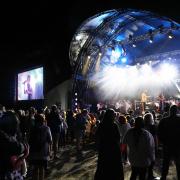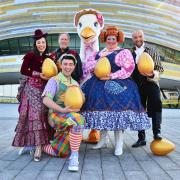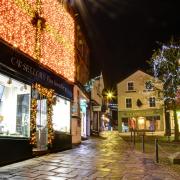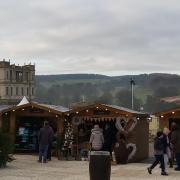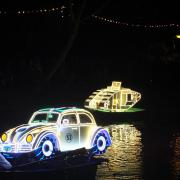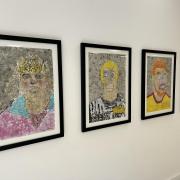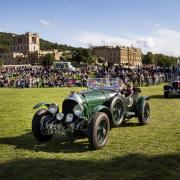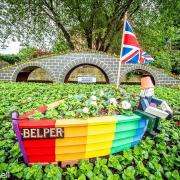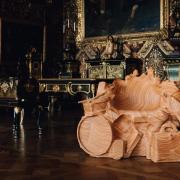The name Rolls-Royce is synonymous with Derby but how much do we know about co-founder Charles Stewart Rolls? A new biography explores the extraordinary life of the pioneer motorist, balloonist, businessman and aviator
Charles Rolls was just nineteen when the Red Flag Act was repealed in 1896 and the speed limit was increased from 4mph to a stately 10mph. The son of a millionaire MP and peer of the realm, he was the first person to own a car at Cambridge University, had the first car in Wales, and wrote on motoring in the press and for Encyclopaedia Britannica – all in his early twenties. He drove the future King George V and Queen Mary round the family estate and the roads of Monmouthshire at the age of twenty-two, and was an amateur car dealer while completing his studies.
He raced in scary inter-town races on the Continent, Paris/Berlin, Paris/Vienna and the infamous 1903 Race to Death, Paris/Madrid in 1903. In this race several fatalities to spectators and competitors occurred and the race was halted by the French government at the halfway point in Bordeaux to prevent further slaughter.
In 1900 Rolls won the famous Thousand Mile Trial – a tour of Britain to promote motoring, which had previously been slow to develop due to the Red Flag Act. The route took the 60 or so competitors through Derby, Matlock and Buxton. The first ever speed trial, in which Rolls was second, was held on the A6 near Buxton at Taddington. There were not many cars around then, and the trial finished at the Waterloo Inn, which still stands.
Even while racing, Rolls, at 25, had a London garage, which could store 200 cars, with 70 employees. His firm, C.S. Rolls & Co. sold cars – some on hire purchase, an innovation at that time – serviced cars, trained chauffeurs and even taught customers how to drive.
Welbeck Estate in Nottinghamshire was the scene of many national speed trials. It was there that the British speed records were set (83mph in 1902), but the course was not quite flat and the Automobile Club of France – the world authority at the time – would not ratify the British records. At one time Rolls was the world’s fastest motorist at Welbeck.
Rolls, through his family connections, knew everyone in London’s motoring circles, he was a leading figure in the Royal Automobile Club, but wanted a British car to sell. In a timely encounter, he was introduced to Henry Royce in Manchester and agreed to take his entire output of cars, to be sold under the name of Rolls-Royce.
In 1906 Rolls won the second Tourist Trophy race on the Isle of Man in a Rolls-Royce, and also that year broke the Monte Carlo Rally record by 90 seconds – despite a three hour wait for the ferry at Boulogne.
Rolls knew what the aristocratic buyer wanted, Royce knew how to make the perfect silent car whose quality would remain, in his own words, ‘long after the price is forgotten’.
Rolls-Royce Ltd gained eminence very quickly, largely due to Rolls’s London and high society connections, and by 1907/1908 the Silver Ghost was sweeping the board and becoming a ‘must have’ for the aristocracy.
The magazine Car Illustrated, edited and owned by John Scott Montagu, helped Rolls sell the cars. Montagu’s mistress, Eleanor Velasco Thornton, became the model for the Flying Lady, which is the Spirit of Ecstasy mascot that adorns the front of many Rolls-Royce cars.
By this time the cars were selling themselves and Rolls’s thoughts turned to the air. He had met the Wright brothers in 1906 while flattening American rivals driving a Rolls-Royce in the five mile race in New York. He had, in fact, been following their progress for several years and, together with two others, founded the Royal Aero Club, originally a ballooning club. His weekend relaxation was ballooning. He made over 170 flights, including many with his lady companions, one of whom flew with him over 60 times. His ballooning led him to understand the challenges that powered flight would bring with air currents, air pockets, etc.
He was needed less at Rolls-Royce, and his Board of directors did not want to become involved in aero engine production, although they were to become so in 1914. However, Rolls was present when the Derby factory was opened in 1908, which included a state of the art assembly line designed by Royce, producing the ‘Best Car in the World’ – albeit only one per day. The factory was split into two sides, with the Safe Side on one side of the roadway, consisting of the main shop, and comprising raw materials stores, machine shop stores and finished parts, fitting bays and a large erecting bay. On the other side of the roadway was the Dangerous Side, including the smiths shop, the casehardening shop, the sheet metal works, the pattern shop and the store, boiler house and chassis running/testing shop. The idea was that if there was a fire on the Dangerous Side, it would leave the Safe Side unscathed.
Rolls also made great play of the research carried out by Royce and his assistants in the physical laboratory. He said that the company regarded this as the most important part of the works, but he could not show it to the visitors in view of the confidential development within it. The truth was somewhat different because that was where all the rubbish and scrap had been hidden out of sight for the day!
In 1907 the Silver Ghost AX 201 became the company’s flagship car. Originally painted green, it was later painted silver with silver fittings. It was later sold to a private owner but re-purchased by Rolls-Royce Ltd in 1948, meticulously restored and has travelled all over the world. In New Zealand an anti-royalist even threw a bucket of mud at it, causing several thousand pounds worth of damage. Insured now for $35m AX 201 (chassis no. 60551) is the most valuable car in the world – literally priceless.
Rolls’s aviation career was short but eventful. He learned to fly in a year, mostly on the Isle of Sheppey; he sold the idea of war-time use of aeroplanes to the Imperial Committee of Defence as war fears grew. He then flew the Channel both ways in June 1910, the first flier ever to do so. Six weeks later he was dead, killed at a flying show in Bournemouth. The whole nation mourned.
A private, tall, handsome figure, Rolls was pursued by a number of ladies, and through ballooning, the polo of the day, socialised widely. His dedication to motoring and flying, and his parsimony, made him a complex character. He was unmarried at the date of his death.
‘Derby should be very grateful to Charles Stuart Rolls’ comments Mr Lawson in his book. ‘Rolls could sell, Royce could make and improve. They had enormous respect for each other and founded the best-known brand in Britain’. Now still a car maker, Rolls-Royce is one of the three largest aero engine manufacturers in the world, even if in 1908 the company did not wish to be involved in aviation.
The author, Bruce Lawson, from Montgomery, Powys, grandson of Dr Wilfred Lawson, for many years in practice in Whitwell, Derbyshire, was inspired to write his first book on Rolls by the BBC’s Andrew Marr. Marr wrote about Rolls in his book ‘The Making of Modern Britain’, describing Rolls as a ‘London driving instructor and all-round petrol age adventurer’. Only two other biographies exist, one from 1966 by Lord Montagu of Beaulieu, and one, largely pictorial, by David Baynes so Mr Lawson thought there was room for a third. Lord Montagu’s father features in the Rolls story, and Lord Montagu, the previous biographer, kindly wrote the Foreword for the new book – ‘Charles Rolls of Rolls-Royce’.
For details on how to obtain the book, price £25, which will also be available in major local book stores, go to www.charlesrollsofrollsroyce.com






